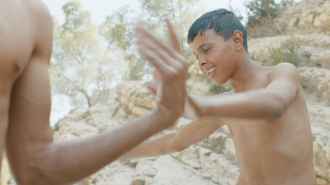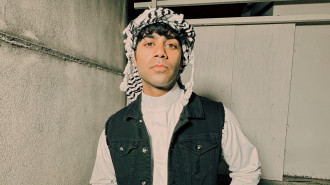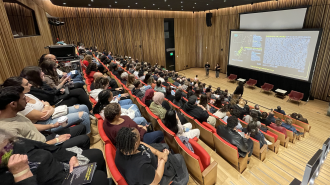Meeting Sherin Khankan, Denmark's first female imam
In August, Sherin Khankan, a well-known Muslim author and activist, opened Denmark's first women-led mosque, in a bid to "challenge patriarchal structures", and create a dialogue between religion and politics.
Born in Denmark to a Syrian Muslim father and a Finnish Catholic mother, Khankan is a sociologist of religion and philosophy, specialising in contemporary Islamic activism in Europe and the Middle East.
She is the founder and co-chairperson of Critical Muslims, an organisation that promotes female Muslim leadership, and has also stood for parliament as a candidate for the Radical Left Party.
With Maryam Mosque (the name alludes to Mary, the mother of Christ - a prominent figure in Islam and Christianity alike), Sherin and her fellow imams aim to build inter-faith bridges, provide a more welcoming atmosphere for female worshippers, and illuminate the theological diversity of the Islamic faith - frequently over-looked in an increasingly Islamophobic environment in Europe.
Could you tell us about your journey to becoming the first female imam in Denmark?
Khankan: Back in August 2001, I founded Critical Muslims, an association that promotes female Muslim leadership. We have a Sufi-oriented approach to the interpretation of Islam, and we believe in the separation of religion and politics; in the sense that we believe it is possible to be a Muslim and a secular at the same time - depending on how one defines secularism.
We define secularism as a debate between religion and politics, as opposed to the traditional definition of secularism as non-religiosity.
Then 9/11 happened, and suddenly the whole debate became centred on fear. People started to see Islam as a threat to western democracy, and I felt like this debate was lacking in nuance, given the vast diversity of religious belief within Islam.
Some forms of Islam might pose a threat to Western democracies, but others do not - however, this view of Islam as a static, homogeneous belief system is terribly flawed. So, I wanted to nuance the debate on Islam in Denmark, because I was experiencing how Islamophobia was starting to grow and manifest itself in Western societies.
In 2006, I wrote an article, titled The Muslim Manifesto, in which I raised the question of female imams and the need for institutionalising Islamic feminism. Last year, I felt the time was ready and I started to search for a building. I think that for a movement to become powerful, it needs to be institutionalised.
What we do in the Maryam mosque challenges the patriarchal structures of religious institutions. I wrote an article about it, and surprisingly, a donor called us and offered a building that was previously used by Spanish consulate. And here we are.
Challenging these deeply embedded patriarchal structures has provoked the outrage of some of your critics, such as Imam Waseem Hussein, chairman of Danish Islamic Centre, who believes that there is 'no need for a women's mosque'. What do you think constitutes this anxiety?
Yes, when you change these structures, you change the balance of power, and this why some people oppose what we are doing. But we are not here to de-legitimise any other mosque. This is simply about focus, about addressing an unmet need.
 |
If a woman could lead the prayer at the time of the prophet, she is more than capable of doing it in Denmark in 2016 |  |
So, where are we on this theologically?
Since the time of the second caliph, Umar [634-644 CE], many Muslims have institutionalised the idea that an imam can only be a man. If you look at Islamic history, the first mosque was established by the Prophet Muhammad in his home - and he had allowed his wives Aisha, and Umm Salama to lead women in prayer.
This is written in the Hadith collection [traditions attributed to Prophet Muhammad], and Kitab-al Tabaqaat al-Kabir, a biographical lexicon by Ibn Saad (784-845 CE) that chronicles the lives of Muslim women in Medina at the time of the Prophet. Of course, this particular volume is excluded from the main literature on the subject
There is also the hadith of Umm Waraqa, a woman who had wanted to accompany the prophet to war, but was instead asked to stay back and lead prayers - which were mixed-congregation - at a mosque established in her home. This mosque was large enough to have an official status. We know this because there were two muezzins [people who deliver the call to prayer] there, so this was not a small, private congregation.
When Muslims today normalise and support patriarchal structures and institutions by not allowing women to give sermons or lead prayers, they are actually practicing the tradition of the second caliph, Umar, and not the Prophet himself. In Caliph Umar's time, house mosques developed into more official institutions. As people from different families and clans started to congregate together, the caliph excluded women from participating in Friday prayers.
It is important to understand that a mosque is a mosque and it fulfills the same purpose; whether in a house, or elswhere, it is still a place where we worship God as individuals, and community members. If a woman could lead the prayer at the time of the prophet, she is more than capable of doing it in Denmark in 2016.
Can you tell us about the experiences that made you, and other members of your congregation, feel excluded from male-led mosques, raising the need for Maryam Mosque?
The main idea of a mosque is to serve the community, so there has to be a need that the mosque fulfills. People are looking for a place to worship that champions inclusiveness, a place where they can worship without feeling judged or estranged.
Some of the mosques in Denmark have a traditional position on various issues and we have a new generation of Danish Muslims, some of whom feel alienated by these places.
 |
They'll tell you that paradise lies at the feet of the mother, but they'll say very little on issues of real-life discrimination faced by many Muslim women |  |
I guess people feel the need to have a deeper connection with the imam, and if you're a woman up in the balcony, and the imam is leading the prayer in the main hall, you feel a distance. There is no sense of a deeper communication between a female worshipper and a male imam, and I believe the job of the imam is not only to lead prayers and give sermons but to be a spiritual care-person.
That is the most important aspect of the job, and a bit more personal. Women who experience a crisis in their marriage, or are subjected to physical or mental violence, or who have questions on sexuality, identity, or raising children, prefer to speak to female imams because there is better communication between the two, and a greater sense of solidarity.
So we have found a niche, and we are trying to promote better communication between worshipers and spiritual care-takers. In fact, I am in my third year of becoming a psychologist-therapist, because I want to use cognitive tools in my work as an imam.
And of course, if a woman is not allowed to give a sermon, then all religious debates are filtered through the perspective of men...
Exactly. My next sermon at the mosque will be about women in Medina at the time of the prophet, and I don't think you'll find many male imams who give sermons on such issues.
They'll tell you that paradise lies at the feet of the mother, but they'll say very little on issues of real-life discrimination faced by many Muslim women.
Furthermore, we are trying to challenge Islamophobia. We believe it will be hard for people to hold on to the narrative that Islam is an oppressive religion, if they see Muslim women taking the lead and interpreting Islam in a way that is relevant to the dilemmas we face today.
Farhad Mirza is a researcher and journalist. His work has been featured in various media outlets including Al-Jazeera, Guernica Magazine and Middle East Eye.
Follow him on twitter @FarhadMirza01
Opinions expressed in this article remain those of the author and do not necessarily represent those of The New Arab, its editorial board or staff.

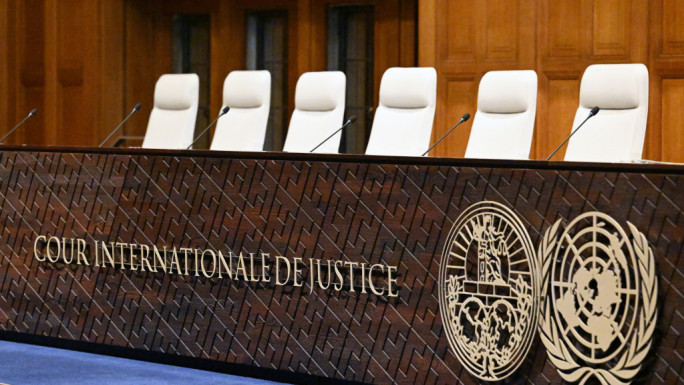
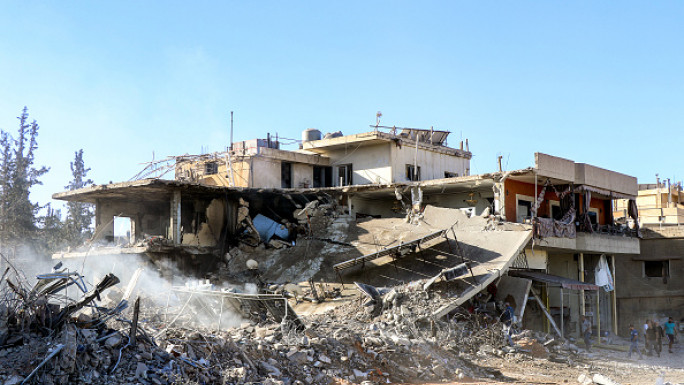
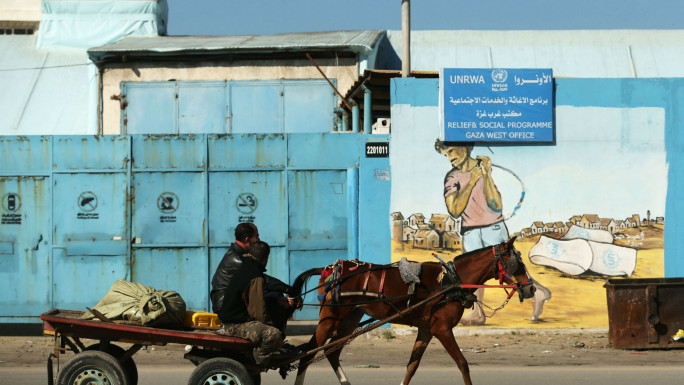

 Follow the Middle East's top stories in English at The New Arab on Google News
Follow the Middle East's top stories in English at The New Arab on Google News
